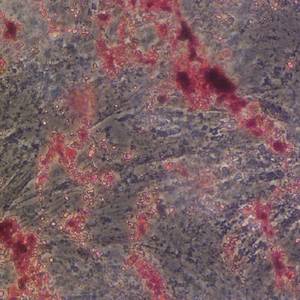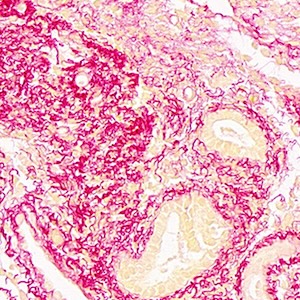High WTAP expression level as a promising biomarker for poor prognosis in colorectal cancer: a pilot study

Accepted: 18 October 2024
HTML: 0
All claims expressed in this article are solely those of the authors and do not necessarily represent those of their affiliated organizations, or those of the publisher, the editors and the reviewers. Any product that may be evaluated in this article or claim that may be made by its manufacturer is not guaranteed or endorsed by the publisher.
Authors
Colorectal cancer (CRC) is a major public health concern and identifying prognostic molecular biomarkers can help stratify patients based on risk profiles, thus enabling personalized medicine. Epitranscriptomic modifications play a relevant role in controlling gene expression, N6-methyladenosine (m6A) regulators play crucial roles in cancer progression, but their clinical significance in CRC cancer has thus far not been elucidated. Thus, we aimed to examine by immunohistochemical techniques and RT-qPCR, protein levels and RNAs expression of m6A writers (METTL3, WTAP) and eraser (FTO) in a cohort of 10 patients affected by CRC. The patients were followed for 5 years and values of METTL3, WTAP and FTO RNAs in alive vs dead patients were compared. Proteins expression and RNAs expression had a different trend, METTL3, WTAP and FTO proteins’ expression showed an increasing trend from non-cancerous adjacent (N) tissue vs carcinoma (CA) tissue G1 stage, and then a decreasing trend from G1 to G2 and G3 stages. The most marked increase was observed in WTAP that, from a 40% of protein expression positivity in N tissue raised to the 81% of positivity in G1 stage K tissue. RNAs expression of METTL3, WTAP and FTO genes in N tissue vs G1 stage CA tissue was significantly different, the analysis and comparison of RNAs values in patient alive after 5 years (0.58±0.04) vs patients dead after 5 years (1.69±0.29) showed that only WTAP values resulted significantly high in dead patients. The fact that WTAP protein expression levels lower while WTAP RNA expression remains high, lets us hypothesize a sort of inhibition of protein expression, but further studies are needed to clarify the mechanism. Although the results suggest a relationship between biological meaning and prognostic utility of WTAP, this prognostic utility must be confirmed by further studies on a larger sample.
Downloads
Publication Facts
Reviewer profiles N/A
Author statements
- Editor & editorial board
-
profiles
- Academic society
- N/A
- Publisher
- PAGEPress Publications, Pavia, Italy
To learn about these publication facts, click
PF is maintained by the Public Knowledge Project
Ethics Approval
this pilot study was approved by the Institutional Review Board of the Sapienza University of Rome, ItalyHow to Cite

This work is licensed under a Creative Commons Attribution-NonCommercial 4.0 International License.
PAGEPress has chosen to apply the Creative Commons Attribution NonCommercial 4.0 International License (CC BY-NC 4.0) to all manuscripts to be published.
Similar Articles
- Bo Dai, Hailin Liu, Dingmin Juan, Kaize Wu, Ruhao Cao, The role of miRNA-29b1 on the hypoxia-induced apoptosis in mammalian cardiomyocytes , European Journal of Histochemistry: Vol. 68 No. 3 (2024)
You may also start an advanced similarity search for this article.

 https://doi.org/10.4081/ejh.2024.4145
https://doi.org/10.4081/ejh.2024.4145













